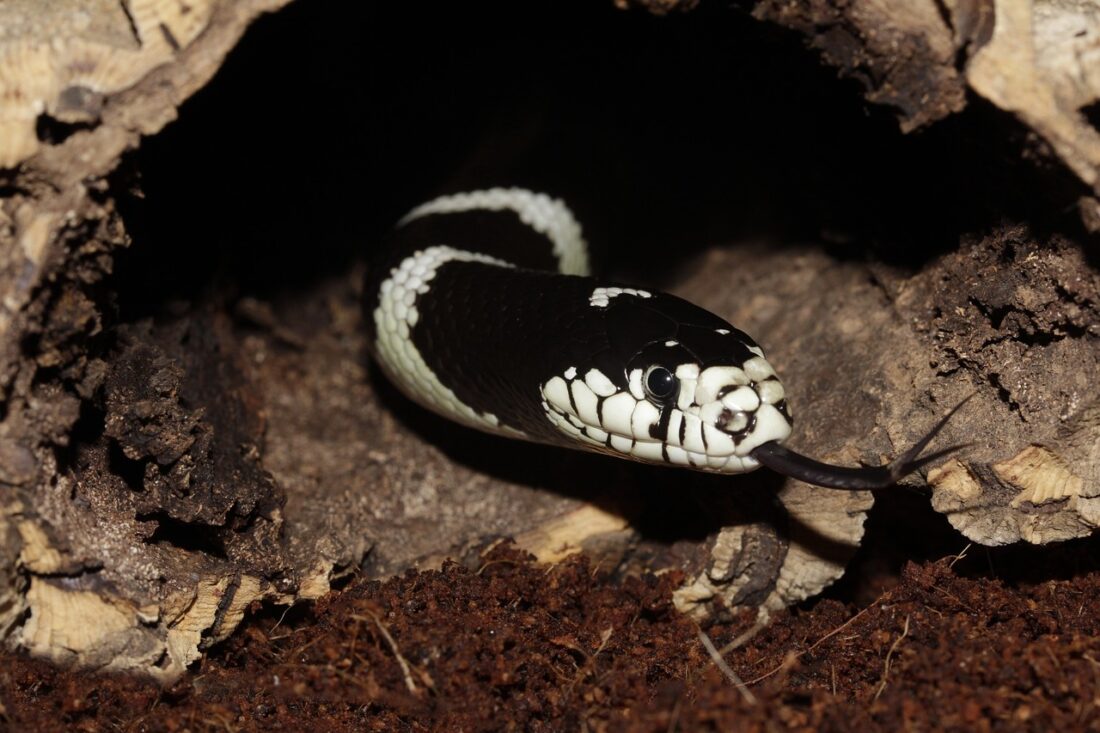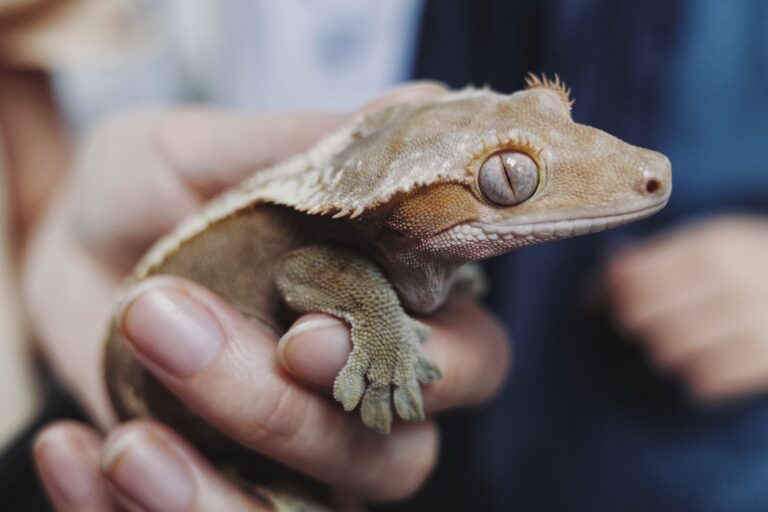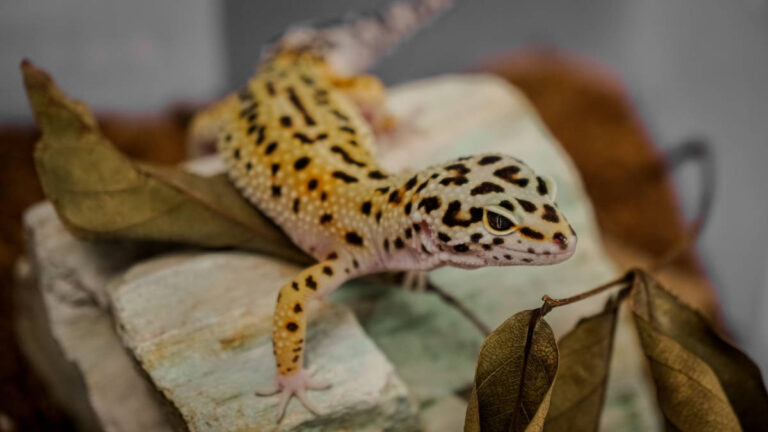How Long Can a Snake Live Lost In a House?
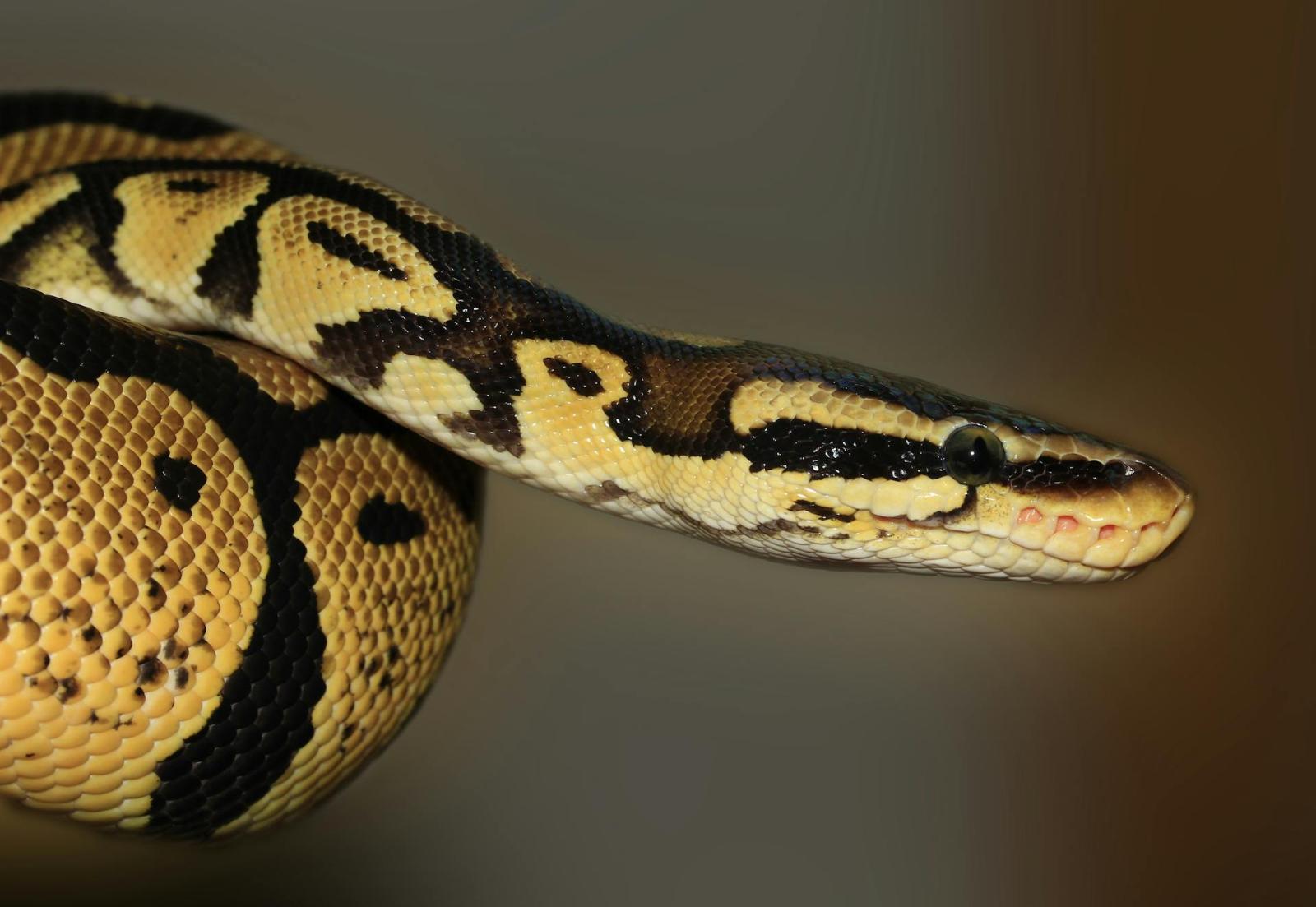
Losing a pet snake in your home can be scary, but don’t worry! Most snakes are very tough and can survive inside your house for weeks or months. They stay hidden and quiet, but with the right plan, you can find them safely.
This guide will show you:
- How long snakes can live lost in a house
- Where they usually like to hide
- Step-by-step ways to find them
- Detailed tips on specific strategies, including searching at night, using heat and lures, safe tracking methods, and checking vents
- Tips to keep your snake from escaping again
Whether you have a corn snake, ball python, boa, king snake, milk snake, or any other snake, these tips will help.
Quick Answer: How Long Can a Snake Survive Indoors?
Snakes are way tougher than most people think. I’ve seen many stories of snakes going missing for weeks, months, or even almost a year, and then coming back looking fine.
Some were hiding in closets, behind furniture, under beds, in walls, or even at neighbors’ houses. A few lost a little weight or got a few scratches, but overall, they were okay and went back to eating normally.
So yes, it can be stressful when a snake disappears, but many snakes survive being “lost” for a really long time. Just check warm spots, small gaps, and anywhere they could squeeze into, and they often show up on their own.
In short, assuming the snake is not a super fragile species, I strongly believe it can survive outside its enclosure for many months.
Factors that Affect How Long a Snake Survives
The length of time a snake can survive outside its enclosure depends on several factors, and it can vary widely depending on the species, the environment, and the individual snake’s condition.
1. Species and Hardiness
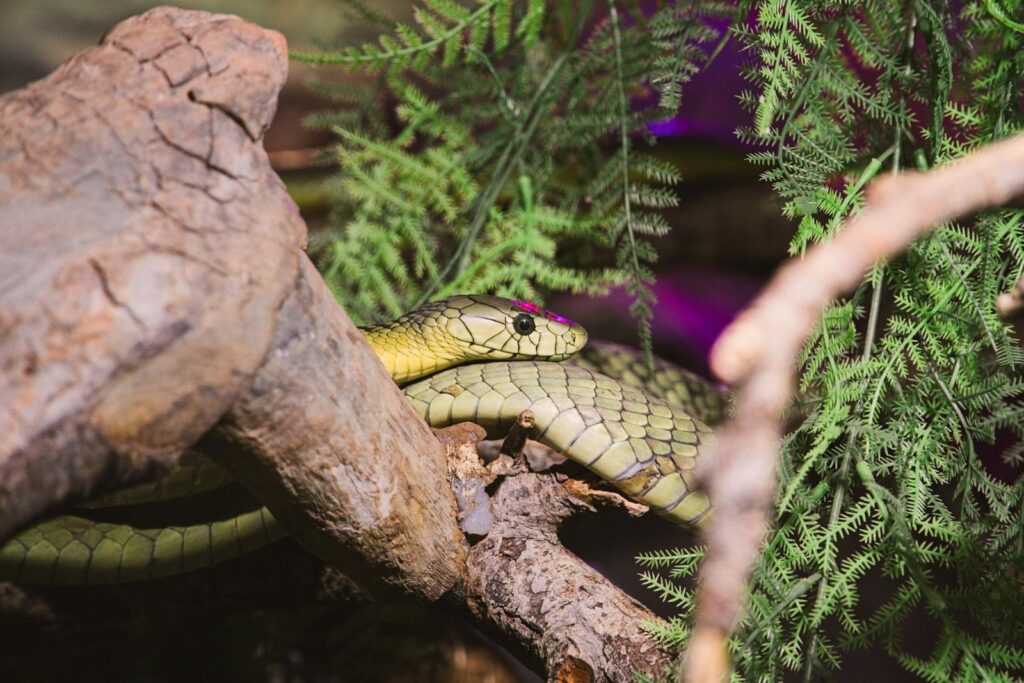
Some snakes are tougher than others.
Hardy snakes: Ball pythons, corn snakes, and king snakes can handle being loose for a while.
Delicate snakes: Tropical or sensitive species, like Brazilian rainbow boas or small arboreal snakes, don’t do as well outside a controlled habitat.
2. Food Availability
Snakes can survive a long time without food, but it helps if they can find something to eat.
In fact, a scientific study examined how ball pythons, ratsnakes, and western diamondback rattlesnakes respond to extended periods without food. The researchers found that snakes can survive for up to six months by lowering their metabolism and using stored fat efficiently, demonstrating remarkable adaptation to starvation.
Many snakes can go weeks or months without eating. Lack of food can weaken them over time, so access to prey or stored body fat is important.
3. Water and Humidity
Hydration is essential for a snake’s survival. Snakes need water for drinking and proper bodily functions.
Some species, like tropical boas, also need humidity to shed properly. Without water, snakes can become dehydrated and stressed.
4. Temperature and Environment
Snakes rely on their environment to regulate their body temperature.
Temperatures that are too cold or too hot can harm them. A moderate indoor temperature is usually fine for hardy species. Extreme heat or cold can be dangerous quickly.
Check out this veterinarian post for the correct management and husbandry of reptiles.
5. Age and Health
A snake’s age and health play a big role. Young or small snakes are more vulnerable. Older or sick snakes may not survive long outside their enclosure. A healthy adult male usually copes the best.
6. Safety and Hiding Spots
Snakes always feel safer when they have a place to hide.
They will look for dark, quiet places like behind furniture or in closets. Hiding helps them conserve energy and stay safe. Watch out for household dangers like pets, chemicals, or heaters.
7. Stress and Activity
Stress can affect their feeding and immune system. Some snakes hide and stay inactive to save energy, which helps them survive. Very active or stressed snakes may use up energy faster.
Common Hiding Spots in a House
If your snake ever escapes its enclosure, it will instinctively look for a safe, quiet place to hide. Snakes don’t like being out in the open. They are naturally secretive and will look for dark, warm, and secluded spots.
Knowing where snakes are likely to hide in your house can help you find them quickly and get them to safety.
1. Behind and Under Furniture

One of the most common hiding places is behind or under furniture.
Sofas, chairs, and beds create dark, cozy spaces where a snake can feel protected. Look especially in corners and under heavy furniture where it’s difficult for people or pets to reach.
Some snakes may even crawl inside the folds of couches or under mattresses if there’s room.
2. Closets and Cabinets
Snakes often seek small enclosed spaces that feel safe.
Closets are perfect because they are dark and usually quiet. Snakes may hide under stacks of clothes, shoes, or boxes.
Kitchen or bathroom cabinets can also attract snakes, especially if there is moisture or warmth inside.
3. Appliances and Electronics
Snakes also like warm spots, so they may be drawn to warm appliances and electronics.
Refrigerator bottoms, unused washers, dryers, and dishwashers can provide heat and protection.
Electronics like TVs or computers give off warmth that some snakes find comfortable. Always check behind appliances carefully to see if your snake is missing.
4. Vents and Crawl Spaces
Small, narrow areas are perfect for snakes that want to stay hidden.
Snakes can squeeze into spaces along baseboards or behind wall panels. Air vents and heating ducts may provide warmth and cover.
If you have a crawl space or attic, snakes may retreat there if they can get inside.
5. Piles of Boxes or Stored Items
Clutter is a snake’s dream hiding spot. Cardboard boxes, storage bins, or piles of laundry give a snake many places to hide.
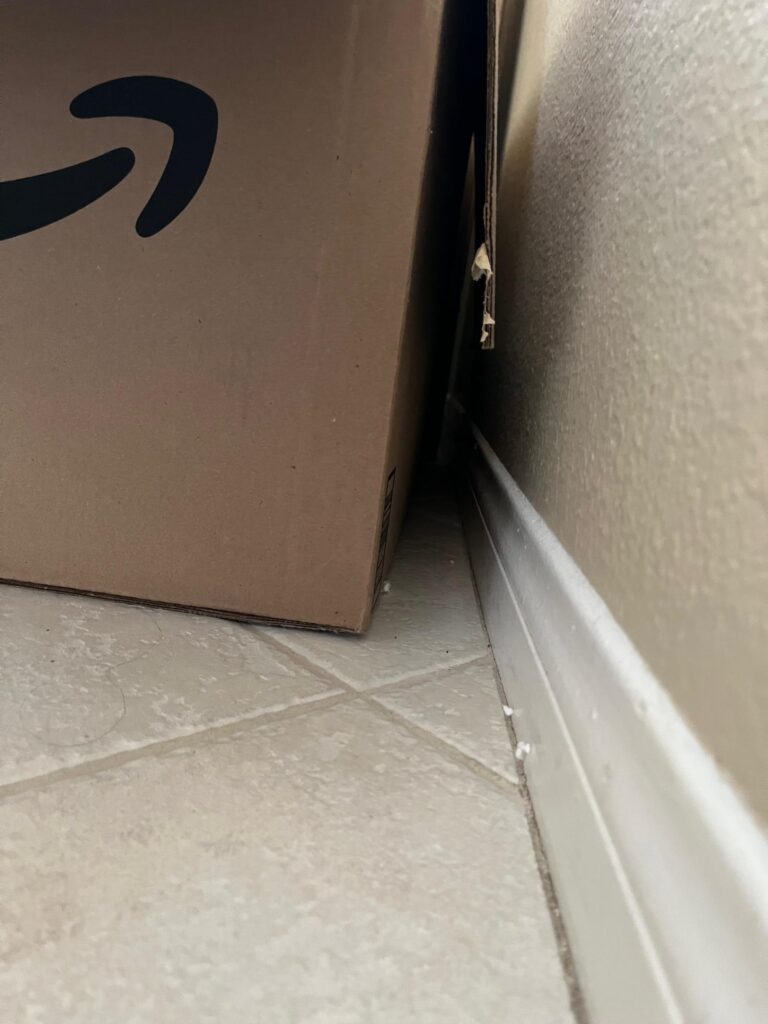
These areas are quiet and often untouched for long periods, making snakes feel safe.
Step-by-Step Plan to Find Your Snake
Losing a snake in your home can be stressful, but don’t panic.
Most of the time, snakes are hiding and safe, not lost forever. They are naturally quiet, secretive creatures.
Knowing how to search for your snake can make the process much faster and less stressful. Here’s a step-by-step guide to finding your missing snake.
Step 1: Stay Calm and Plan
The first step is to stay calm. Snakes can survive for long periods without food or water, so there’s no need to rush or panic. Take a deep breath and plan your search.
- Make a mental map of your home and think about all the likely hiding spots.
- Remember that snakes like dark, quiet, warm, and small spaces.
- Prepare a flashlight, gloves, and a container to safely contain your snake once you find it.
Step 2: Check the Snake’s Enclosure First
Before looking around your house, make sure the snake hasn’t found its way back to its tank or cage. Sometimes they hide inside or around the enclosure without being noticed.
- Look under the tank, behind it, and near any accessories like hides or plants.
- Make sure all doors, lids, and locks are secure to prevent future escapes.
Step 3: Start With Likely Hiding Spots
Snakes often hide close to where they escaped. Focus on these common areas first:
- Behind or under furniture – couches, beds, chairs, and cabinets are top hiding spots.
- Closets and storage areas – snakes like piles of clothes, boxes, or shoes.
- Appliances – washers, dryers, dishwashers, or even behind the fridge for warmth.
- Baseboards, vents, and crawl spaces – narrow, quiet areas make snakes feel safe.
Move slowly and carefully so you don’t startle the snake and cause it to move to a harder-to-find location.
Step 4: Make the Space Inviting

Once you’ve searched the main spots, try to make areas attractive to the snake:
- Leave out a warm hide or box near the areas you’ve already searched.
- Place soft cloths or towels inside the box to make it cozy.
- Snakes may come out on their own if they feel safe and secure.
Step 5: Use Tools and Helpers
Sometimes a snake is still hard to find. You can use tools or helpers to make the search easier:
- Flashlights – shine into dark corners, under furniture, and behind appliances.
- Gloves – protect your hands while moving objects or reaching into tight spaces.
- Family or roommates – more eyes can help check areas quickly.
- Sticky notes or tape – mark areas you’ve already searched to stay organized. (Note: Make sure the area you just checked is not accessible anymore to the snake.)
Step 6: Be Patient and Check Often
Snakes are quiet and may only come out at night or when the area is calm.
- Check hiding spots multiple times over a few days.
- Listen for small movements and watch for shed skin.
- Keep doors closed to prevent the snake from moving to new rooms.
Step 7: Retrieve Safely
Once you find your snake, breathe a sigh of relief!
- Move slowly and gently place the snake in a secure container.
- Avoid grabbing it roughly and support its body carefully.
- Return it to its enclosure and double-check that all doors and locks are secure.
Searching at Night
Looking for a missing snake at night can be easier because snakes are naturally more active in the dark. When the house is quiet and there’s less movement, they feel safer to explore, which increases your chances of spotting them.
Turn off most lights and use only a small flashlight. Snakes dislike bright light, so a low beam lets you scan without scaring them.
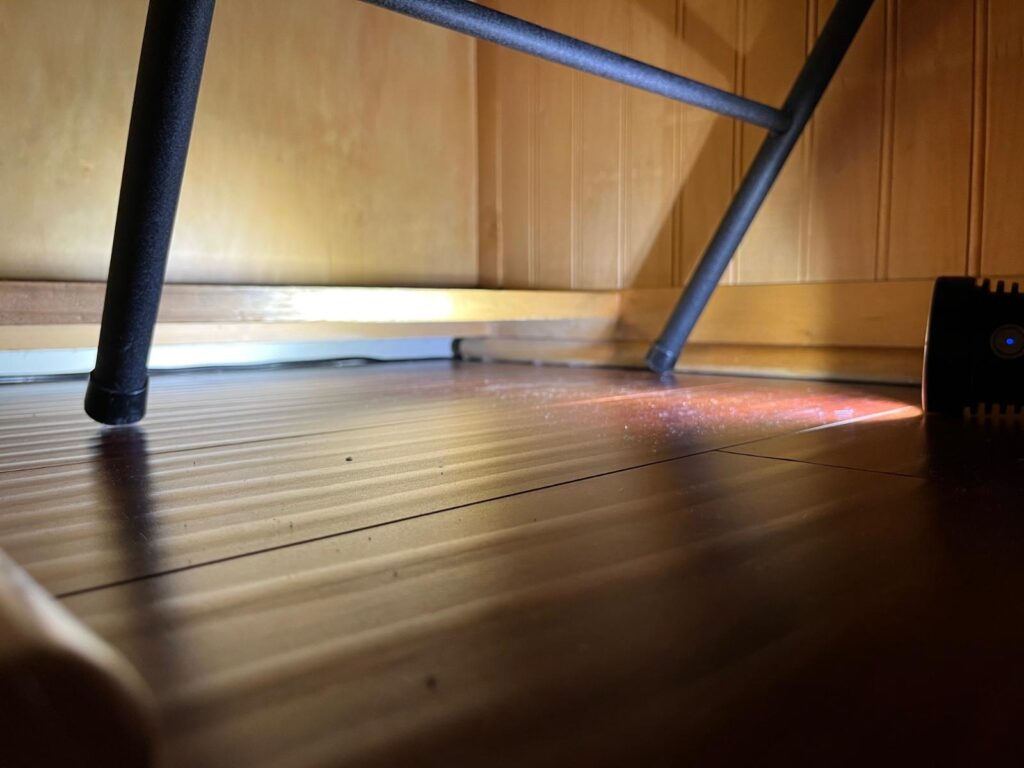
Move slowly, checking under furniture, behind doors, and along walls. Shine the light near the floor, since snakes usually stay close to the ground. If your snake has shiny scales, even a tiny reflection can help you locate it.
Nighttime is also a good time to listen. In a quiet house, you might hear quiet sounds like scales brushing against a wall or items shifting slightly.
While snakes are usually silent, these tiny noises can give clues about where they are hiding.
Patience is key. Move slowly, stay calm, and keep distractions minimal. Many snakes are found late at night or early morning when they feel confident enough to leave their hiding spots.
Using Heat and Lures
Using heat and lures is one of the most effective ways to draw a missing snake out of hiding.
Snakes seek out steady, gentle warmth, especially in quiet rooms where they feel safe enough to explore.
A simple option is to use a heated blanket on low setting. Heated blankets stay warm for a long time and create a soft, even heat that snakes naturally move toward.
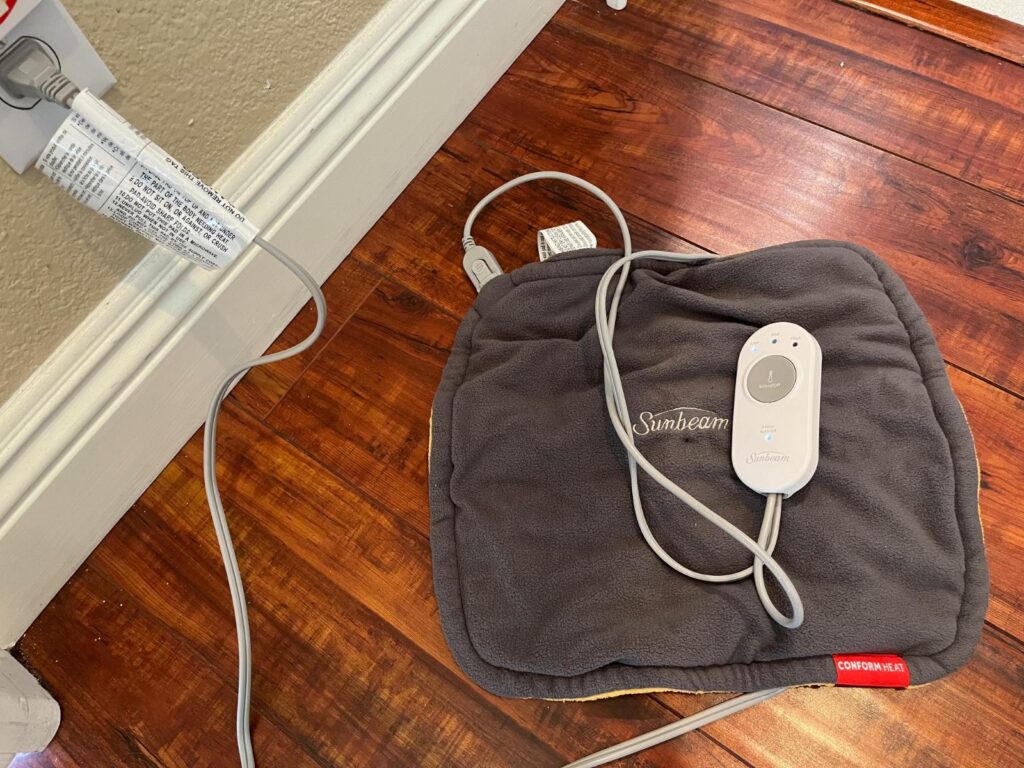
Just make sure the blanket is in good condition and does not get too hot. Place it on the floor and cover it lightly with a thin towel so it feels inviting without trapping too much heat.
You can also warm up one of your snake’s enclosure hides by resting it on part of the heated blanket for a few minutes.
Once warm, slide the hide slightly to the side so it still touches the edge of the heat source.
This creates a warm, familiar spot with the snake’s own scent, which often makes it more appealing than random hiding places around the home.
For extra encouragement, add a small lure such as a used piece of bedding or a paper towel from the enclosure. Snakes rely heavily on scent, so familiar smells help draw them closer.
After setting everything up, keep the room quiet and dim. Check the warm area every 20 to 30 minutes. Many snakes eventually curl up near the heated spot once they feel safe enough to come out.
Safe Tracking Methods
Safe tracking methods help you narrow down where your snake is without stressing or harming it. Snakes usually travel along walls and tight spaces, so your goal is simply to gather clues, not trap the animal.
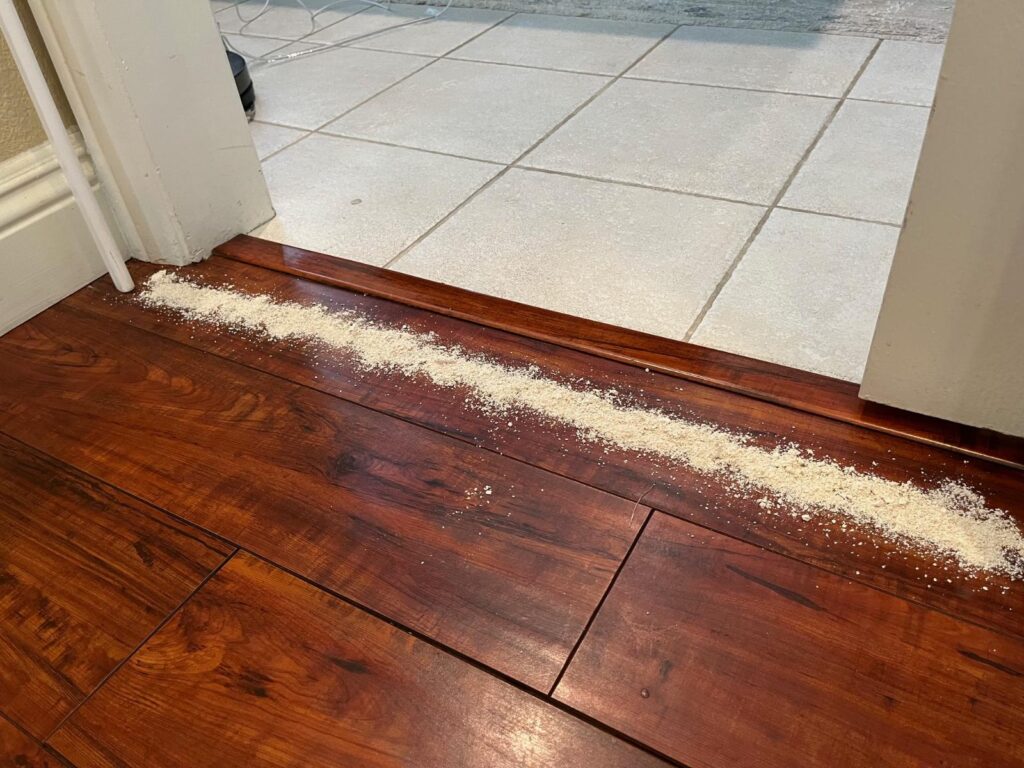
One easy method is to use flour. Lightly sprinkle a thin line across doorways, room edges, or near hiding spots.
Keep the layer very light so it’s safe and easy to clean. If your snake moves through it, it will leave clear tracks showing the direction it went. Check the lines every few hours or the next morning.
You can also use crinkly noise-makers, like a trash bag, a small sheet of aluminum foil, or parchment paper.
Place these near warm areas, under furniture gaps, or in pathways the snake may use. In a quiet house, you may hear movement if the snake crosses them.
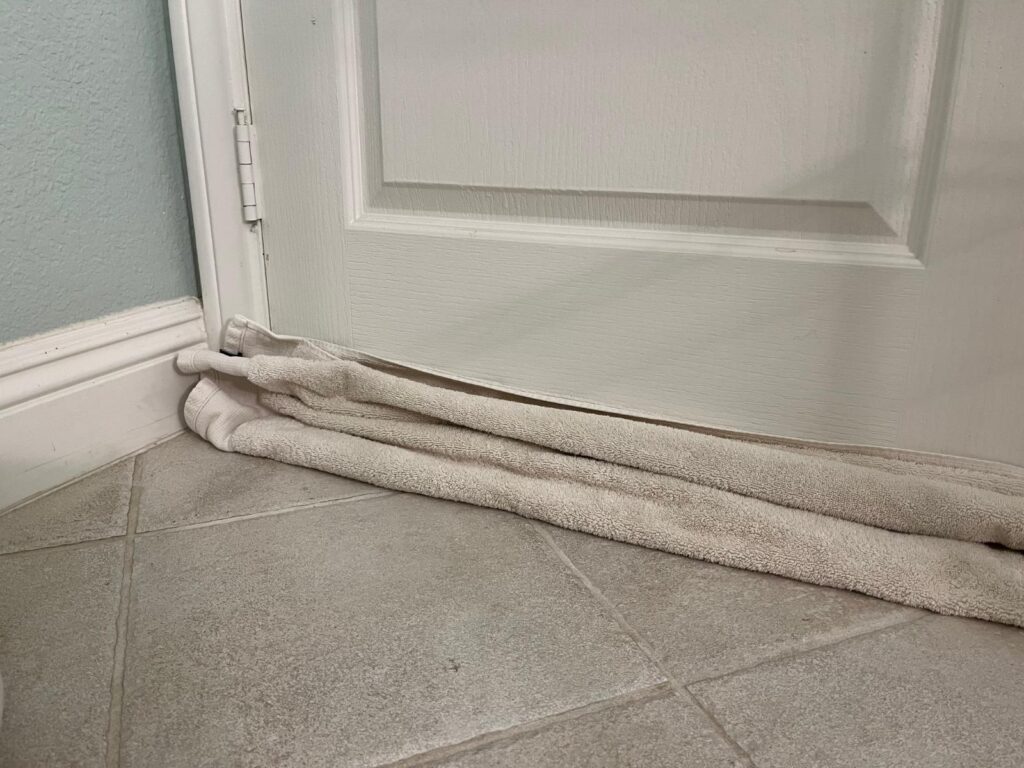
Another helpful trick is creating soft barriers. Roll up towels, pillows, or cardboard pieces and place them in doorways to gently limit the snake’s travel area.
This helps you contain the search to a smaller part of the home without risking injury to the snake.
Checking Vents
Checking vents is usually the last step because most snakes don’t willingly choose vents unless they’re looking for warmth or darkness. But if you’ve already searched the main rooms, it’s worth ruling them out.
Start with floor vents or low wall vents, since these are the only ones a snake can easily reach. High vents near the ceiling are almost never used by your snake.
Remove the vent cover and look inside with a flashlight. Move slowly and watch for any movement.
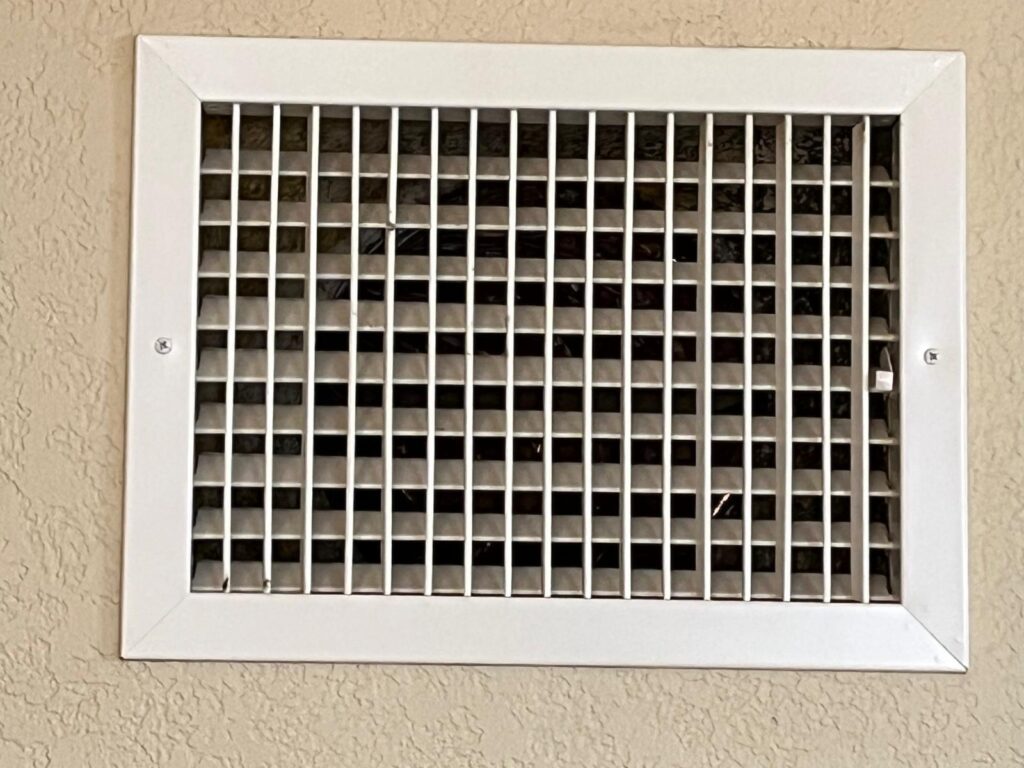
Many homes use flexible ducting, which is the soft, tube-like silver or gray material that runs between vents. It bends easily and feels padded, which makes it simple to check the outside of it.
For larger snakes, you can gently feel along the duct, and if your snake is inside, you may notice its shape or weight. Just be gentle so you don’t accidentally squeeze it.
For small snakes, you may need to disconnect the duct and look through it carefully. Take a picture beforehand so you can reconnect everything correctly. (Please stay safe while you are doing this!)
If you’ve already lowered the home’s temperature to encourage your snake to seek warmth, vents become less appealing. Cooler vents won’t hold a snake’s interest for long.
Checking vents helps you rule out a possible hiding spot so you can focus your search elsewhere.
Preventing Escapes
Preventing your snake from escaping in the first place is always better than trying to find it afterward. A few simple steps can make a big difference.
First, make sure your snake’s enclosure is secure. Check that lids, doors, and sliding panels fit tightly and can’t be nudged open.

Locks or clips are a smart addition, especially for active or strong snakes. Even a small gap can be enough for a determined snake to slip through.
Next, double-check that the enclosure setup is stable. Avoid stacking items on top that could fall or push doors open. If you have a screen or mesh top, make sure it’s in good condition with no gaps or tears.
Also, keep the area around the enclosure clear. Snakes sometimes climb or explore nearby furniture if the path is easy. Reducing nearby clutter lowers the chance of an accidental escape.
Finally, establish safe handling routines. Always close the enclosure immediately after feeding, cleaning, or interacting with your snake.
By combining secure enclosures, stable setups, and careful handling, you can greatly reduce the risk of your snake escaping and save yourself the stress and worry of a lost snake.
Frequently Asked Questions
How long can a snake go without food?
Most healthy snakes can survive weeks or even months without food, depending on their species, size, and age. Younger snakes need food more often, while adults can last longer.
Do snakes come out at night?
Yes, snakes can come out at night, but activity level depends on the species and conditions. Some, like ball pythons, are nocturnal and mostly active after dark.
Others, like king snakes and garter snakes, are usually active during the day but may shift to evening or night if it’s hot or prey is available. Daily patterns also vary based on climate, food, and even the snake’s environment.
Can snakes climb walls?
Most snakes can’t climb smooth surfaces like glass or polished metal. However, many can climb rough or textured walls like brick, wood, or stucco, using grooves or cracks for grip. Larger snakes are less agile but may climb angled surfaces or trees.
How often do snakes drink water?
Snakes drink as needed, usually every few days in captivity. Frequency depends on species, age, diet, temperature, and humidity. Many also soak in water to stay hydrated, especially during shedding.
Can snakes squeeze under doors?
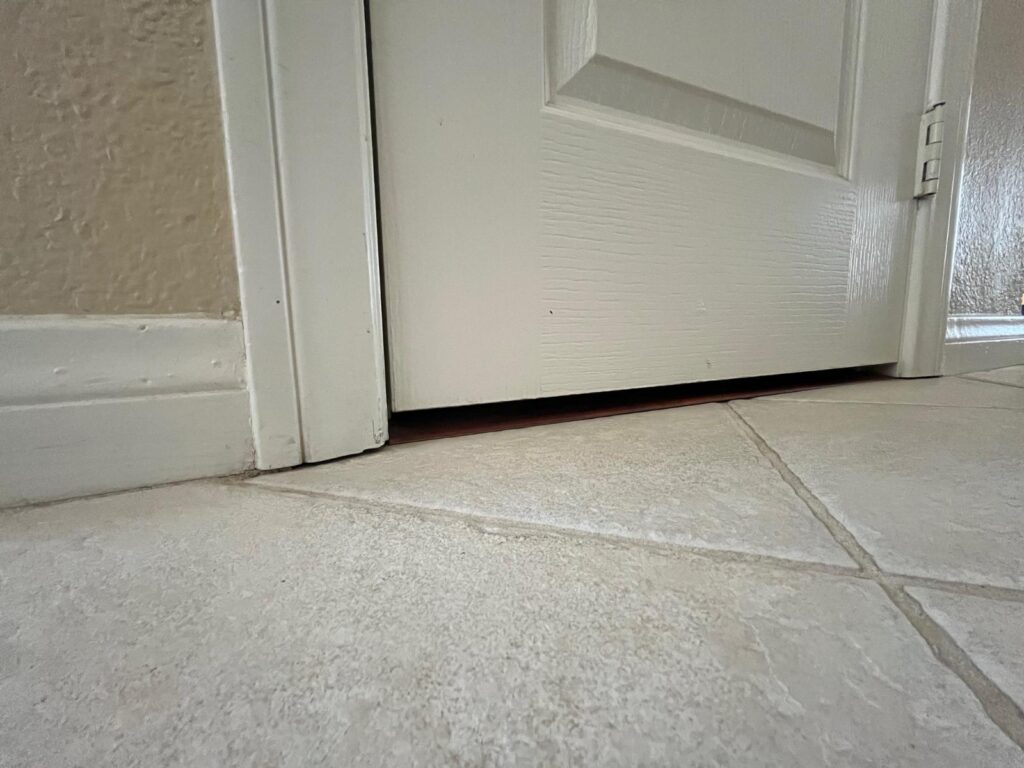
Yes, depending on door gap height and species. Snakes can slip through surprisingly small gaps because their bones and bodies are very flexible.
Even a larger snake can fit under a door if the space is just slightly taller than its head. They often use these gaps to explore, find food, or seek shelter, so it’s important to check and seal any potential escape routes in your home.
How to tell if a snake is stressed?
Signs of stress include hiding constantly, refusing food, hissing or striking, rapid breathing, rubbing against cage walls, or frequent escape attempts. Proper care and a comfortable environment can help reduce stress.
Summary
Losing a pet snake can be stressful, but with patience, careful searching, and a few smart strategies, most snakes are found safe and sound.
Understanding where snakes like to hide, their activity patterns, and how they react to heat, light, and familiar scents can make your search much easier.
Nighttime searches, checking common hiding spots, and using safe methods to lure them back all increase your chances of success.
Prevention is just as important as recovery.
Securing enclosures, sealing small gaps, and keeping the environment consistent can help prevent future escapes.
Remember, snakes are resilient, flexible, and often just curious. They’re rarely far from a cozy hiding spot.
By staying calm, observing carefully, and using the strategies outlined here, you can find your missing snake quickly and safely. Every snake owner’s experience is unique, but preparation, patience, and understanding your snake’s behavior are the keys to a successful outcome.
What did you think of this guide? I hope it helped you feel calmer and more prepared. If you have any questions, feel free to drop a comment below! Catch you in the next one! 🙂

